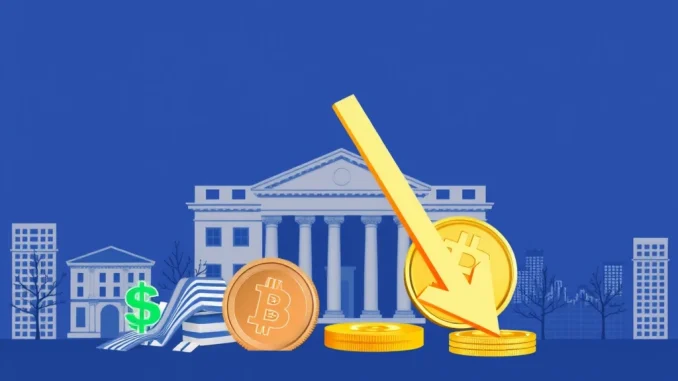
Financial markets are buzzing following a significant move from the European Central Bank (ECB). For anyone watching global economic shifts, especially those interested in how macroeconomic decisions can ripple into the digital asset space, the recent ECB rate cut is a key development worth understanding.
What Does the ECB Rate Cut Mean?
The European Central Bank (ECB) announced a reduction in its key interest rate, specifically the deposit facility rate. This rate was lowered by 25 basis points (bps), moving from 2.25% down to 2.00%. This decision was widely anticipated by market participants, aligning with forecasts and data previously shared by sources like Investing.com.
But what does lowering the deposit facility rate actually signify?
- It’s one of the primary tools the ECB uses to manage monetary policy in the Eurozone.
- A lower rate means commercial banks earn less by depositing funds with the ECB, potentially encouraging them to lend money out instead.
- This action is typically taken to stimulate economic activity by making borrowing cheaper for businesses and consumers.
- It can influence overall interest rates across the economy, from mortgages to business loans.
How Do Interest Rates Influence Financial Markets?
Changes in interest rates by major central banks like the European Central Bank have a profound effect on traditional financial markets:
- Bond Markets: Existing bonds with higher yields become more attractive when new bond yields fall, while yields on new bonds typically decrease.
- Stock Markets: Lower borrowing costs can boost company profits and make stocks relatively more attractive compared to lower-yield bonds or savings accounts.
- Currency Markets: A country or region with lower interest rates might see its currency weaken as it becomes less attractive for foreign investors seeking yield.
This recent adjustment in monetary policy by the ECB signals a potential shift towards easing conditions after a period focused on combating inflation through rate hikes.
Considering the Crypto Market Impact
For those focused on digital assets, understanding the potential crypto market impact of an ECB rate cut is crucial. While cryptocurrencies operate independently of central banks, their prices are influenced by the broader macroeconomic environment.
Here’s how lower interest rates could potentially affect the crypto space:
- Search for Yield: In a low-interest-rate environment, traditional savings and low-risk investments offer diminished returns. This can push investors to seek higher yields or potential growth in alternative assets, including cryptocurrencies.
- Increased Liquidity: Easier access to credit and potentially more money flowing into the economy could find its way into riskier asset classes like crypto.
- Risk Appetite: Lower rates often correlate with increased investor risk appetite, making speculative assets like Bitcoin and other cryptocurrencies more appealing relative to ‘safe haven’ assets.
It’s important to note that the connection isn’t always direct or immediate. The crypto market impact is also influenced by market sentiment, regulatory news, technological developments within the crypto space, and other global events. However, shifts in major central bank monetary policy like the one by the European Central Bank are significant factors in the overall financial ecosystem that crypto inhabits.
What’s Next for ECB Monetary Policy?
This initial ECB rate cut, while expected, marks a notable moment. It suggests the ECB believes inflation is sufficiently under control to begin easing financial conditions. Future decisions will depend on incoming economic data, particularly regarding inflation trends, economic growth, and wage developments in the Eurozone.
Summary: A New Chapter for Interest Rates
The European Central Bank‘s decision to cut interest rates to 2.00% is a significant policy shift, moving away from the tightening cycle. This anticipated ECB rate cut aims to stimulate the Eurozone economy through easier monetary policy. While the direct effects are felt in traditional finance, the potential crypto market impact is a key consideration for digital asset investors, as lower traditional yields can make alternatives more attractive. Monitoring how this initial cut influences economic data will be key to understanding the ECB’s future policy direction and its broader implications for global markets.



